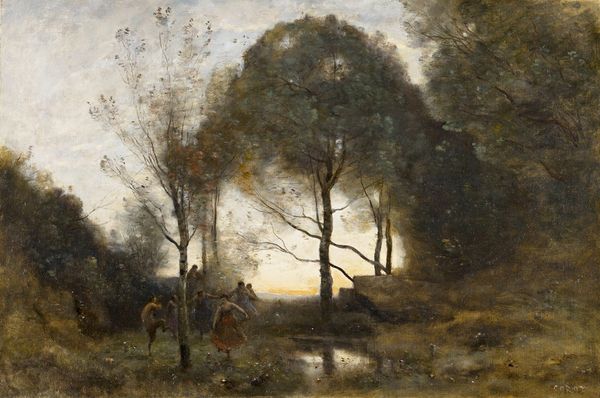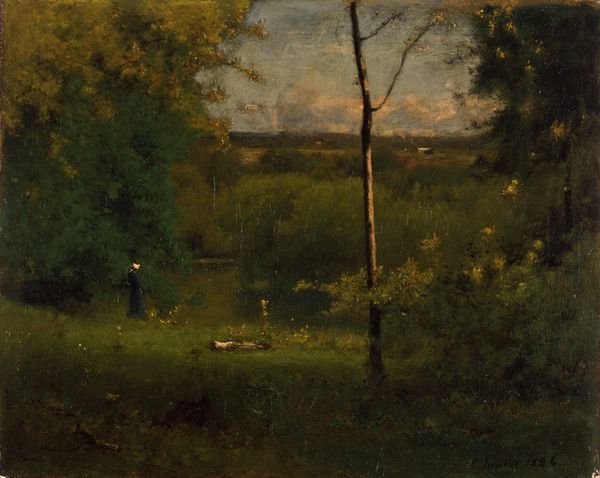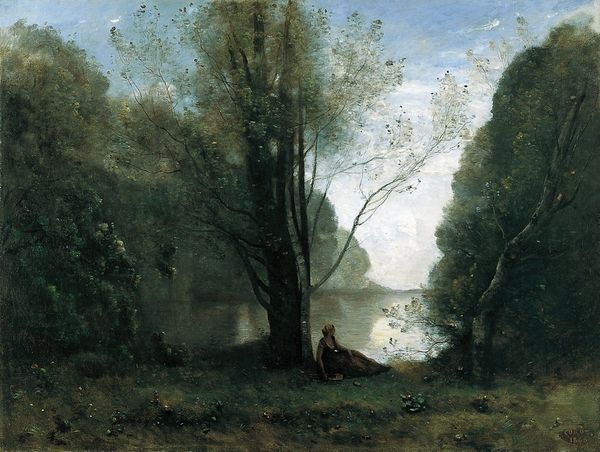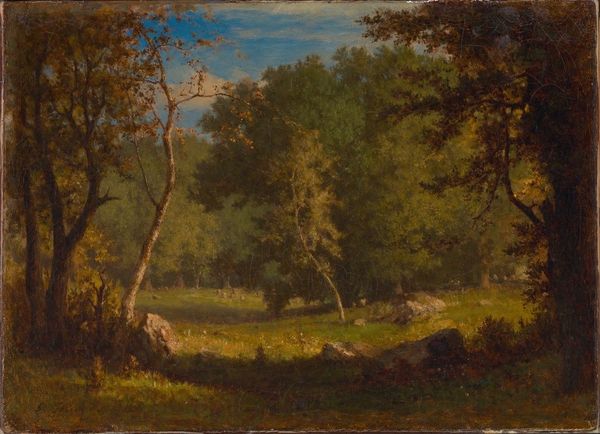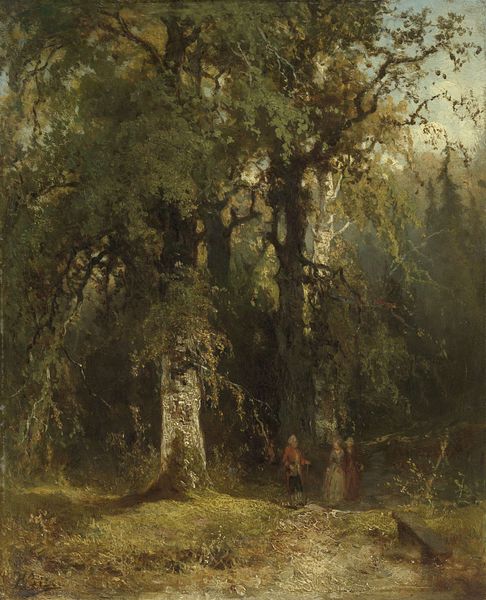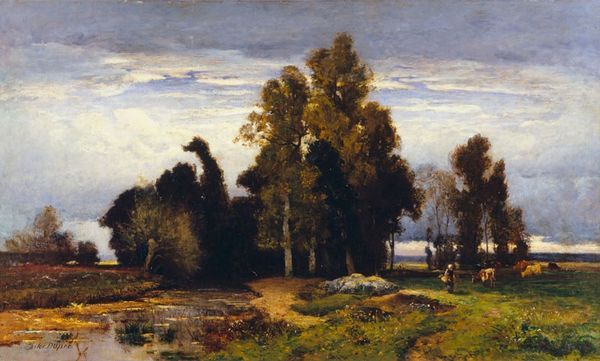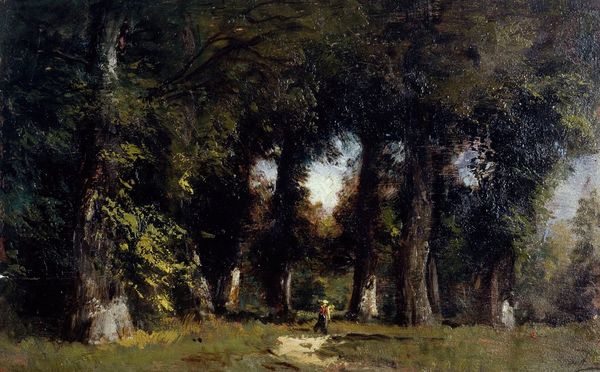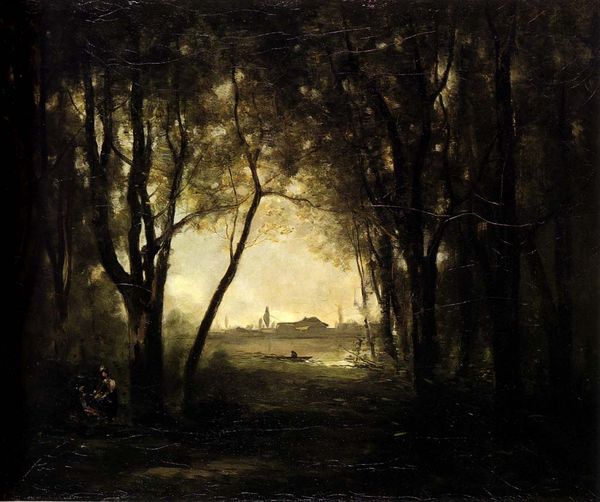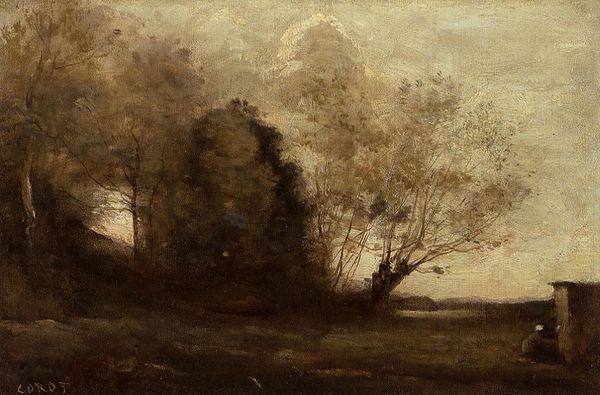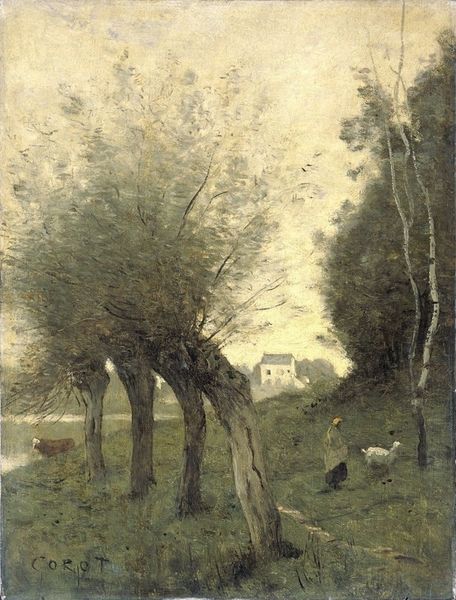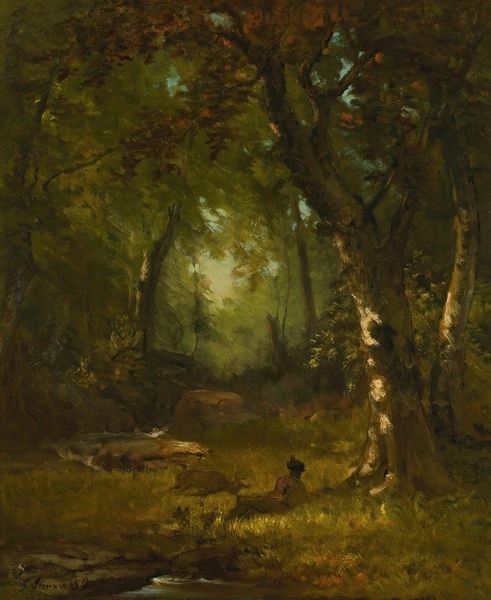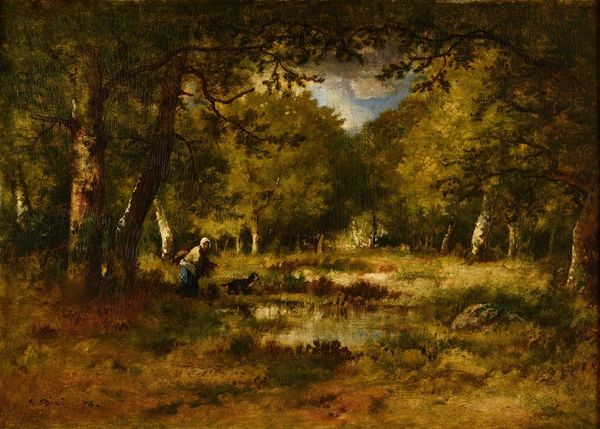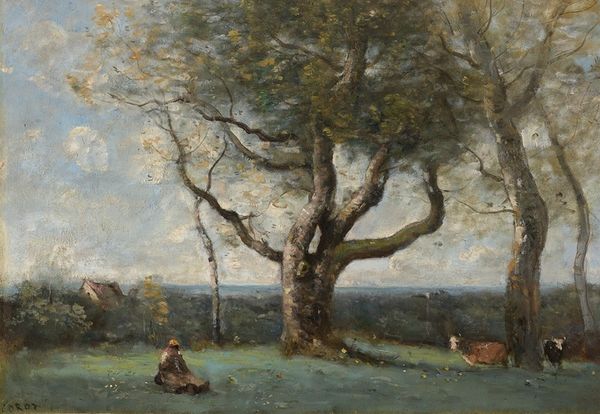
Copyright: Public Domain: Artvee
Curator: Böcklin's "The Sacred Grove," an oil painting completed in 1882, immerses us in a landscape tinged with both Romanticism and Symbolism. Editor: It's incredibly evocative. There's this sharp contrast between the luminous clearing and the shadowed grove, giving a sense of solemnity and perhaps even a touch of the uncanny. Curator: Indeed. Böcklin was deeply invested in evoking specific moods through form. Considering the artist's Swiss origins, the social context may have involved private religious practice, particularly regarding nature's spirituality. The painting is almost history-painting, reflecting upon sacred European sites that were historically endangered by war, deforestation, industrial pollution, and tourism during Böcklin’s lifetime. Editor: Let’s drill into those formal properties; that careful arrangement of trees directs the viewer's gaze inward, focusing attention on the central altar. I’m fascinated by the rendering of light - see how the flames flicker, echoing the trembling foliage above? There are only three or four clear areas in this murky landscape; without those calculated highlights the whole scene would appear very gloomy. Curator: Precisely. And, what materials were accessible to Böcklin? How does he achieve that shimmering effect, both somber and grand, considering the economic landscape? Böcklin and his cohort turned back to sacred lands for respite in an age of rapid capitalist growth that left many artists struggling to earn a living in the urban marketplace. It seems he may have turned away from figuration for some time just to develop an economic practice and technique to handle grand projects like this. Editor: I see your point – the making reflects material availability and the artist’s immediate milieu. Despite his context, B\u00f6cklin employs structure and form here to express broader existential anxieties and reflect the human experience of the spiritual in a rapidly changing world. Curator: Yes, perhaps. By exploring that interplay of materiality and formal technique within its specific production context, we appreciate Böcklin’s statement on mortality, spirituality, and the very essence of existence as seen in a time of rapid, historical change. Editor: Well, I see your perspective broadened by context! I’ll remember it for the light-play alone, so evocative of an individual’s most powerful emotions.
Comments
No comments
Be the first to comment and join the conversation on the ultimate creative platform.
